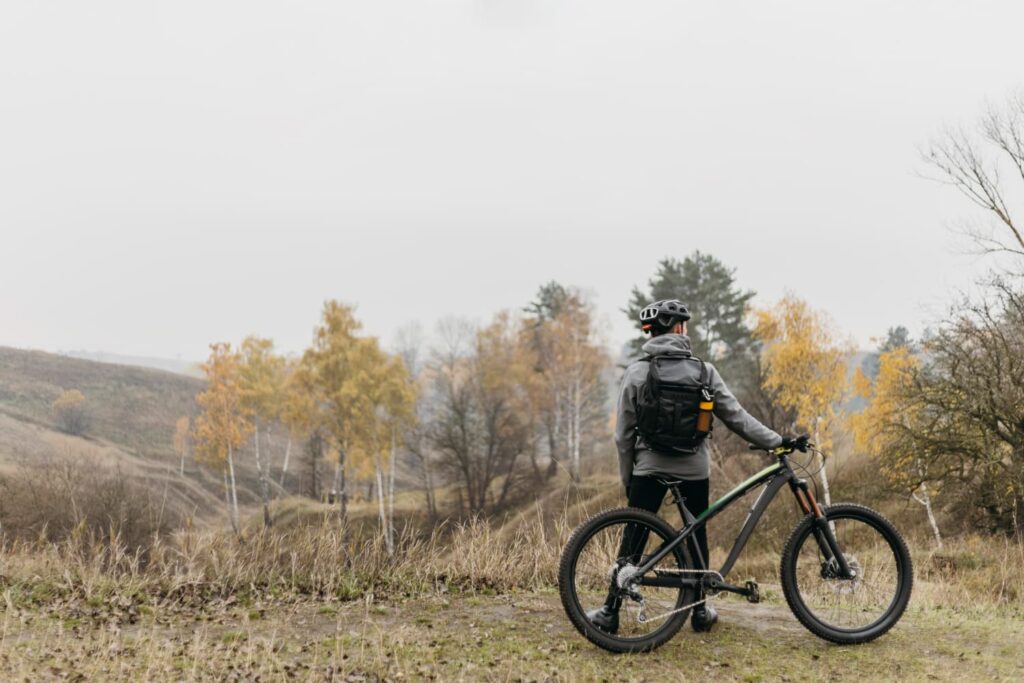Understanding Mountain Bike Sizing
Finding the perfect mountain bike is an exciting journey, but one of the most important aspects is ensuring that you’ve got the right size for your height. Getting it right not only enhances your riding experience but also prevents discomfort and injury. Let’s dive into the nitty-gritty of mountain bike sizing, and I promise it will be more interesting than watching paint dry.
Why Bike Size Matters
First things first, why should you even care about bike size? Well, here’s the scoop: a bike that fits well allows for better control, optimizes your power transfer, and significantly improves your comfort level. It’s like wearing shoes that actually fit rather than a pair two sizes too big. Trust me, you wouldn’t want to strut around in clown shoes, right?
The Basics of Bike Frame Sizes
Mountain bike frames are generally measured by their size, which can vary from brand to brand. Typical frame sizes are designated as small, medium, large, and extra-large.
Frame sizes are often listed in inches or centimeters, depending on the manufacturer. Here’s a breakdown of approximate frame sizes by height:
- Small: 4’10” to 5’4″
- Medium: 5’4″ to 5’10”
- Large: 5’10” to 6’2″
- Extra-large: 6’2″ and above
Keep in mind that these categories are just guidelines. Different bike brands may have slight variations, so it’s always best to check specific sizing charts.
Measuring Your Height and Inseam
Before you rush to the bike shop, grab a tape measure. You’ll want to measure your height and inseam length. These measurements are essential when determining the right bike size.
Take Your Height Measurement
You know the drill here: stand up straight against a wall and have someone measure from the top of your head to the ground. Easy peasy! If you are riding solo, just mark the spot on the wall where your head meets and then measure from the floor to the mark.
Measure Your Inseam
Now, the inseam measurement is a bit trickier. Here’s how to do it: grab a book, stand up straight, and place the book between your legs, pushing it up into your crotch like it’s a saddle. Mark where the top of the book meets the wall and measure from the floor to that mark. This measurement can help you find the right standover height, which is crucial for comfort and control.
Choosing the Right Mountain Bike Style
There are a few different styles of mountain bikes, each designed for specific riding terrains and preferences. Knowing what style fits you best can narrow down your choices and give you a better idea of the size you need.
Cross-Country Bikes
For those who love long rides and fast trails, cross-country bikes are a great choice. They are lightweight and built for speed but can be a tad uncomfortable if not sized correctly. A proper fit here will help you maintain stamina on longer rides without feeling like you’ve just run a marathon.
Trail Bikes
Trail bikes offer a balance of climbing and descending when riding varied terrains. They’re typically more forgiving on rough trails, but if you’ve got long legs, you may need a larger frame to improve handling.
All-Mountain and Enduro Bikes
These beastly bikes are designed for steep climbs and intense descents. If you’re hitting tough terrain and need more stability, ensuring the right size here is crucial. An oversized frame can make descending more challenging and, let’s face it, no one wants that.
Understanding Standover Height
Standover height is something many riders overlook, but it is critically important. This measurement refers to the distance from the top of the top tube (the bar you straddle) to the ground when you stand over your bike.
When properly sized, you should have at least **1-2 inches** of clearance for mountain bikes. If there’s not enough clearance, you might find yourself in an embarrassing situation if you were to take a spill.
Checking for Proper Fit
To check for fit, stand over the bike with your feet flat on the ground. If you can comfortably hold the bike without hitting the top tube, you should be in good shape. If you’re feeling squished, it’s time to move to the next size up.
Reach and Top Tube Length
Now let’s talk about reach, which is crucial for upper body comfort during rides. The reach refers to the horizontal distance from the seat to the handlebars.
To gauge if your reach is correct, sit on the bike and extend your arms towards the handlebars. You don’t want to feel like a stretched rubber band. If you find yourself hunched over or reaching too far, the bike might be too large.
Positioning Your Saddle
The height and position of your saddle can also affect comfort and control. When seated, your knee should be slightly bent at the bottom of the pedal stroke. Adjust the saddle height accordingly to achieve this perfect pedaling position. You want that Goldilocks zone—just right!
Testing Before You Buy
Always try before you buy! If a mountain bike shop allows it, take it for a spin around the block. You wouldn’t buy a pair of shoes without trying them on, right? Pedal around, stand up and sit down, and see how it feels. Pay attention to how the bike responds when you maneuver it.
Pay Attention to Your Riding Style
Your preferred riding style can also influence the frame size you should choose. If you like to spend more time climbing or racing, a smaller frame might suit your needs better as it provides a more aggressive riding position. Conversely, if you’re more into endurance or leisurely rides, a larger frame may provide better comfort.
Consulting with Professionals
Don’t hesitate to ask for advice. Bike shop staff usually have a wealth of knowledge and can guide you based on your measurements and preferred riding style. And let’s be real, they love talking about bikes, so you’ll likely make their day!
Staying Flexible
Finally, remember that bike preferences can change over time. What works for you now might feel different a year down the road. Don’t be afraid to revisit your size as you become a more experienced rider or if your riding habits evolve.
Conclusion
So there you have it, folks! Sizing your mountain bike properly is essential for getting the most enjoyment out of your rides. Take your time, measure yourself accurately, and always prioritize comfort and control. Happy biking and may your trails be smooth and your rides exhilarating!






